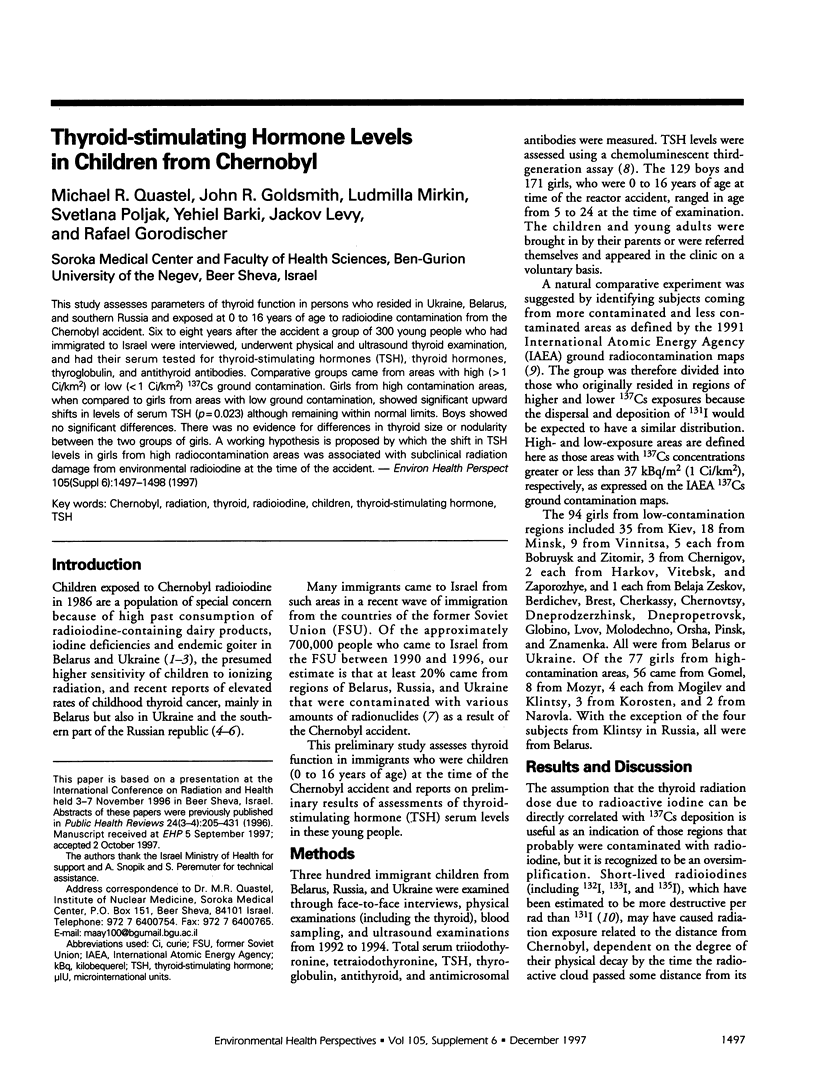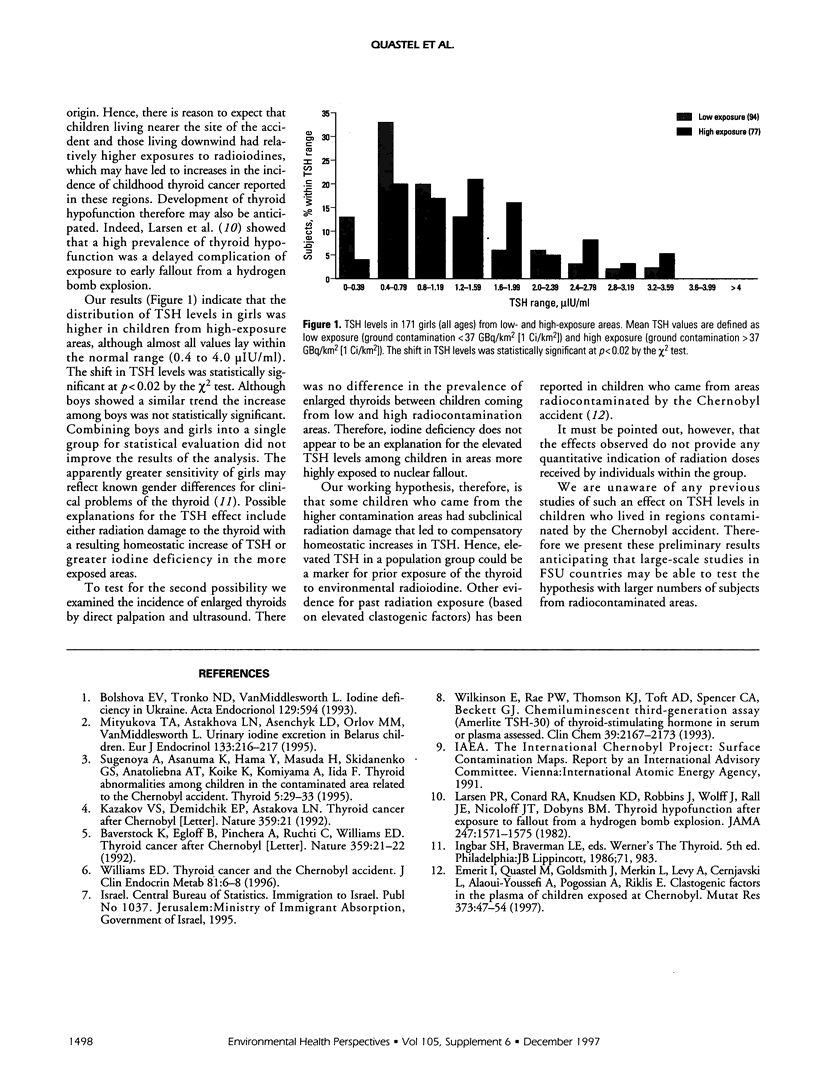Abstract
This study assesses parameters of thyroid function in persons who resided in Ukraine, Belarus, and southern Russia and exposed at 0 to 16 years of age to radioiodine contamination from the Chernobyl accident. Six to eight years after the accident a group of 300 young people who had immigrated to Israel were interviewed, underwent physical and ultrasound thyroid examination, and had their serum tested for thyroid-stimulating hormones (TSH), thyroid hormones, thyroglobulin, and antithyroid antibodies. Comparative groups came from areas with high (>1 Ci/km2) or low (< 1 Ci/km2) 137Cs ground contamination. Girls from high contamination areas, when compared to girls from areas with low ground contamination, showed significant upward shifts in levels of serum TSH (p = 0.023) although remaining within normal limits. Boys showed no significant differences. There was no evidence for differences in thyroid size or nodularity between the two groups of girls. A working hypothesis is proposed by which the shift in TSH levels in girls from high radiocontamination areas was associated with subclinical radiation damage from environmental radioiodine at the time of the accident.
Full text
PDF

Selected References
These references are in PubMed. This may not be the complete list of references from this article.
- Baverstock K., Egloff B., Pinchera A., Ruchti C., Williams D. Thyroid cancer after Chernobyl. Nature. 1992 Sep 3;359(6390):21–22. doi: 10.1038/359021b0. [DOI] [PubMed] [Google Scholar]
- Bolshova E. V., Tronko N. D., VanMiddlesworth L. Iodine deficiency in Ukraine. Acta Endocrinol (Copenh) 1993 Dec;129(6):594–594. doi: 10.1530/acta.0.1290594. [DOI] [PubMed] [Google Scholar]
- Emerit I., Quastel M., Goldsmith J., Merkin L., Levy A., Cernjavski L., Alaoui-Youssefi A., Pogossian A., Riklis E. Clastogenic factors in the plasma of children exposed at Chernobyl. Mutat Res. 1997 Jan 3;373(1):47–54. doi: 10.1016/s0027-5107(96)00187-x. [DOI] [PubMed] [Google Scholar]
- Kazakov V. S., Demidchik E. P., Astakhova L. N. Thyroid cancer after Chernobyl. Nature. 1992 Sep 3;359(6390):21–21. doi: 10.1038/359021a0. [DOI] [PubMed] [Google Scholar]
- Larsen P. R., Conard R. A., Knudsen K. D., Robbins J., Wolff J., Rall J. E., Nicoloff J. T., Dobyns B. M. Thyroid hypofunction after exposure to fallout from a hydrogen bomb explosion. JAMA. 1982 Mar 19;247(11):1571–1575. [PubMed] [Google Scholar]
- Mityukova T. A., Astakhova L. N., Asenchyk L. D., Orlov M. M., VanMiddlesworth L. Urinary iodine excretion in Belarus children. Eur J Endocrinol. 1995 Aug;133(2):216–217. doi: 10.1530/eje.0.1330216. [DOI] [PubMed] [Google Scholar]
- Sugenoya A., Asanuma K., Hama Y., Masuda H., Skidanenko G. S., Anatoliebna A. T., Koike K., Komiyama A., Iida F. Thyroid abnormalities among children in the contaminated area related to the Chernobyl accident. Thyroid. 1995 Feb;5(1):29–33. doi: 10.1089/thy.1995.5.29. [DOI] [PubMed] [Google Scholar]
- Wilkinson E., Rae P. W., Thomson K. J., Toft A. D., Spencer C. A., Beckett G. J. Chemiluminescent third-generation assay (Amerlite TSH-30) of thyroid-stimulating hormone in serum or plasma assessed. Clin Chem. 1993 Oct;39(10):2167–2173. [PubMed] [Google Scholar]
- Williams D. Thyroid cancer and the Chernobyl accident. J Clin Endocrinol Metab. 1996 Jan;81(1):6–8. doi: 10.1210/jcem.81.1.8550795. [DOI] [PubMed] [Google Scholar]


